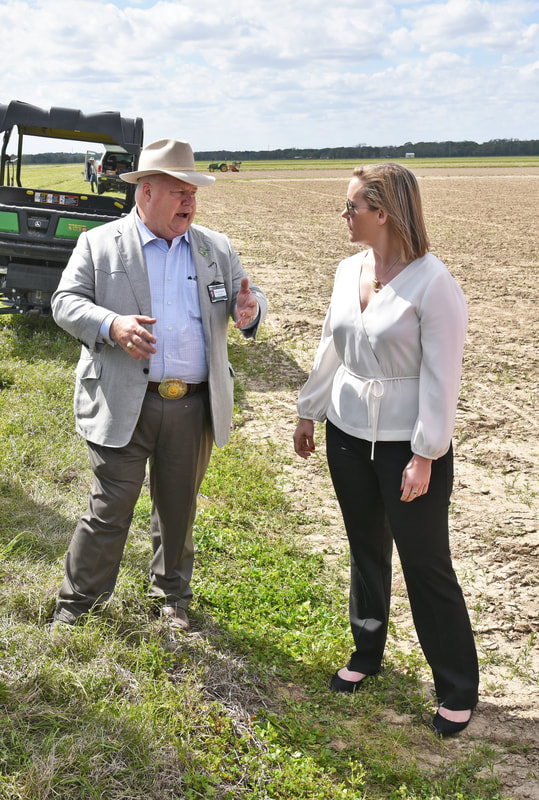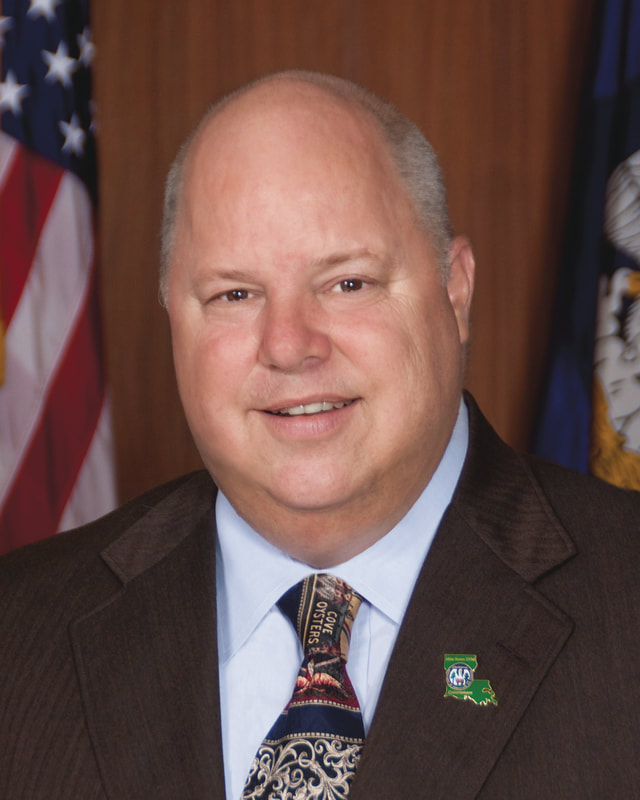|
Story by Bruce Schultz Dr. Mike Strain, Commissioner of the Louisiana Department of Agriculture and Forestry, is concerned that folks in rural parishes are not abiding by the stay-at-home orders issued to keep the coronavirus in check.
It’s a part of the close-knit nature of rural life to socialize and have gatherings for barbecues and crawfish boils. But Strain is advising that now is the time to stay at home so that we will continue to have those friends and relatives for the future. Strain urges everyone to continue to follow CDC guidelines for health, hygiene, cleaning and disinfection. The coronavirus’ impact on Louisiana’s population becomes more obvious every day. For Strain, whose friends span the state, he knows several individuals stricken with the virus, including family members, friends in state government and several people involved in agriculture. He said now is not the time to relax rules for social distancing. “We’re not there yet. We are now at the end of the beginning.” He said most of the focus has been on urban populations, but rural areas need to observe social distancing and stay-at-home orders as well. “We’re telling everybody they need to take this serious. In rural areas, they are not taking this as seriously as they should. It can really hit a rural area hard.” Strain said farmers tend to lead a healthy lifestyle, and they are usually working outdoors. And they are accustomed to working alone. Farmers are usually social distancing as they work the fields and pastures, Strain said. “Also farmers practice a lot of good hygiene. They are used to dealing with herd health.” He said livestock producers understand diseases, vaccines and the need to isolate new or sick animals. He said the U.S. Department of Homeland Security has recognized agriculture as critical infrastructure, and the following have been identified as essential: • Workers supporting groceries and other retail businesses that sell food and beverage products. • Restaurant carry-out, delivery and quick-serve food operations. • Food manufacturing employees and agricultural processors. • Farm workers and support service workers. • Agriculture warehouse, distribution and transportation workers. • Governmental agencies involved in regulatory and program support of agriculture. • Workers who support the manufacture and distribution of forest products. • Employees who make and maintain agriculture equipment. “It is imperative for our national security that we continue to provide food, fiber, energy and health requirements for the human and animal populations. We must ensure these vital goods and services are protected and not interrupted,” said Strain. “We are committed to facing this crisis head on and working as a team at the national, state and local levels.” Getting imported farm labor into the U.S. – crucial to the state’s sugar industry and crawfish producers and processors -- has been a bigger problem since coronavirus reached the U.S., Strain said, but federal agencies have responded to concerns. “The USDA stepped up to the plate. The USDA has leaned forward with the Department of Labor.” Now, foreign workers who went through the required interview will be allowed into the U.S. Strain said commodity prices have not been hurt as severely as stocks. “By and large, they have been fairly stable.” But he said corn has been hit the hardest, probably because of the price drop in oil prices from the decreased demand for fuel and the lowered prices. He said an anticipated 25 percent drop in nationwide corn acreage will probably shift more land to soybeans. Strain said this historic crisis has shown citizens the value of American agriculture. “More than ever, we must recognize the importance of our farmers, ranchers, foresters and producers. They are still working to keep the food supply chain plentiful, safe and healthy.” Strain said there is an increased demand worldwide for food produced in the U.S., although getting those products overseas on ships could be a problem. “If a sailor gets sick, no one will board that vessel,” he explained. He said it’s important to have backup personnel in the shipping industry as well as inspectors. At food processing facilities, staffing is a challenge also, he said. As people get sick, there may be no one to replace them. “For food inspectors, we do not have significant additional workers, should our workforce get sick. We’ve been working very hard to keep those things in motion.” Now that restaurants are only open for pick-up and delivery service, he said, people are cooking more at home and that means grocery spending has jumped considerably. Not just toilet paper is in short supply at groceries. “Our biggest struggle is to keep sufficient food production to stock the grocery shelves.” He said he got a frantic call from someone who mistakenly thought the nation has a reserve of milk being kept out of the marketplace. Strain said he tried to explain that dairy facilities are operating at full throttle and that dairy products are in the marketplace as soon as they are processed, packaged and shipped. “You can’t milk that cow any harder.” Strain said he understands the problems currently faced by crawfish producers with decreased demand from restaurants and sharply lower prices. “A lot of farmers break even on rice and make money on crawfish.” Strain said the public can help by buying crawfish, maybe even a sack to boil at home to freeze the tail meat. He said consumers should consider buying not only crawfish but other Louisiana food items. “Now’s the time to learn canning and to put products up.” As a veterinarian, Strain knows the science of diseases and how they spread. He said antibiotic supplies for humans and animals are in short supply. So far, he said, it does not appear that domestic animals are susceptible to the coronavirus. “Less than 10 animals worldwide have tested positive. It’s not felt that animals can contract or convey the virus.” This disease originally jumped in China from a bat to a pangolin, a critter like the armadillo, and then to humans. Strain said viruses historically have originated in a lower species and then mutated to allow an infection of humans. Several influenza strains started in birds, first in wild flocks then moving to domestic birds.
0 Comments
|
|



 RSS Feed
RSS Feed